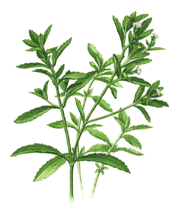President & CEO

Grow your own tasty herbs!
Fresh basil, cilantro, oregano and other herbs can add punch and pizzazz to vegetable dishes. They’re also great for spicing up olive oil to use as a bread dip, or in meat marinades and sauces. But fresh, organic herbs can be quite expensive at the grocery store or farmer’s market, and when you buy bundle of basil, most of it goes bad when you just need a few leaves. There’s a happy solution, though—growing your own delicious organic herbs. It’s not nearly as hard as you might think, and even apartment dwellers can do it. Why organic? Because it’s healthier for you—you’re not ingesting pesticides, herbicides, and toxins. Here’s the difference between organic and conventional gardening and farming:
The easiest way to get started is to buy some plastic plant pots, preferable one-gallon size, and some organic potting soil. If you will be growing your herbs indoors, make sure the potting soil is sterilized to kill bugs. You will also want a watering can that can disperse a gentle sprinkle of water and some organic fertilizer because even the best soil becomes depleted as plants grow (because the nutrients go into the plant.) Burn Fat & Boost Your Immune System with EnergyFirst Omega 3 Fish Oil - Click Here For herbs, choose an organic fertilizer that contains non-zero numbers for N-P-K (Nitrogen-Phosphorus-Potassium) and is highest in the first number—nitrogen. For example, fish emulsion at 5-1-1 or something that’s 3-1-1 would be ideal.
If you wish to grow herbs in a garden or flower bed, that’s even better than containers. Try to plant them in an area where environmental toxins like automobile exhausts are not present. Right next to a street or driveway is not the best location. Harvest leaves whenever you need them, but never take more than 1/3 of the leaves from the plant. If growing herbs from seed is too much trouble, you can buy herb plants and transplant them into bigger pots. In that case, start with #6 above.

|









